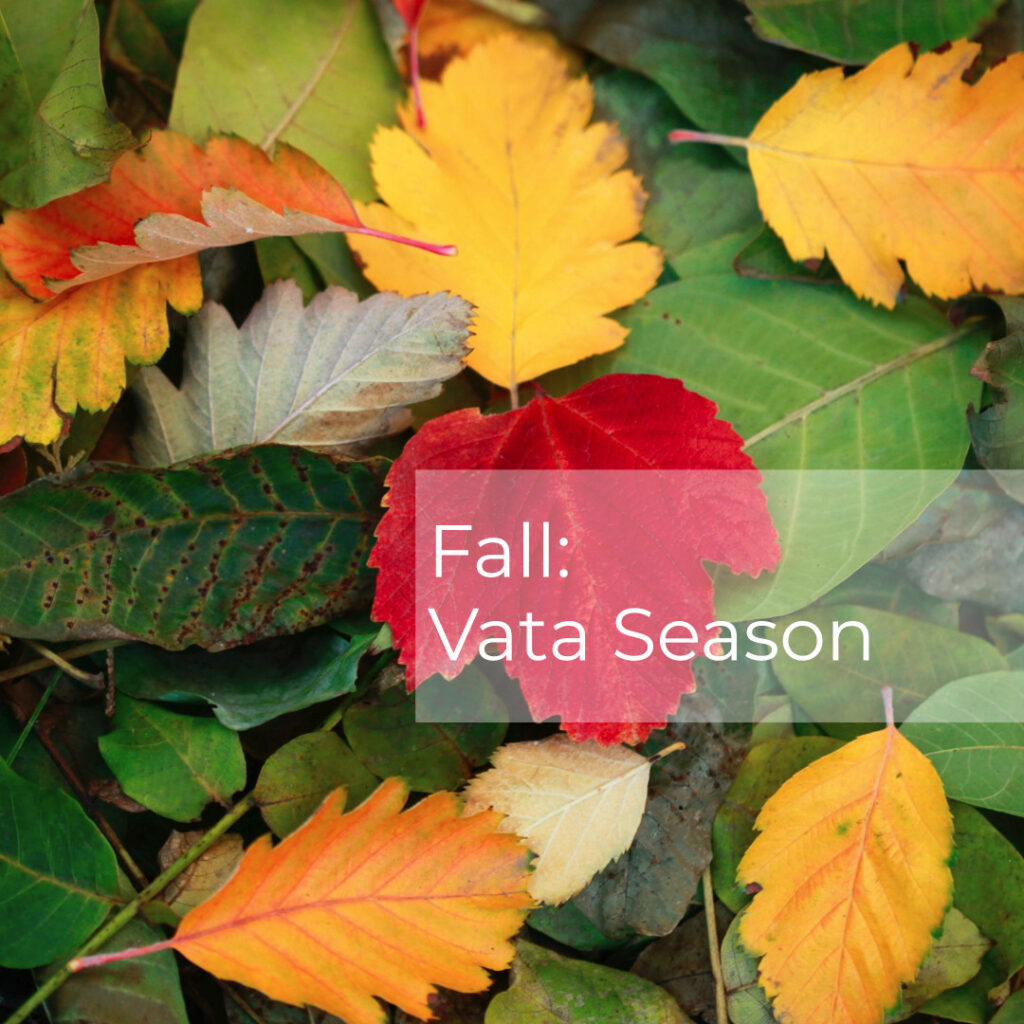
Ayurveda considers a seasonal routine an important cornerstone of health year-round. Balancing the nature of your local climate with lifestyle choices that offset the potential for seasonally-induced imbalances is one of the simplest ways that you can protect your well-being.
But keep in mind that the seasons vary widely from one place to another, as do the qualities that they engender.
Vata season is whatever time of year most embodies the attributes that characterize vata dosha: dry, light, cold, rough, subtle, mobile, and clear (or empty).
Autumn is the classic vata season. However, depending on where you live, the dry and expansive qualities of vata may be the principal components of your environment in other seasons too—showing as early as summer, and if autumn is followed by a very drying, cold, isolating, or windy winter.
Beginning to observe your environment from this qualitative perspective empowers you to respond to both daily and seasonal changes in your local climate. The truth is that many of us adopt seasonally appropriate habits already—without even being conscious of doing so.
For instance, summer is a time when we often enjoy salads and watermelon in abundance, both perfect antidotes to the heat and intensity of the summer. Whereas by October and November, we’re often baking delicious pumpkin breads and dining on hearty, grounding soups—foods that naturally subdue the dry, light, and erratic nature of the fall.
General Tips for Fall
By making diet and lifestyle choices that counter the effects of each season, you can better maintain your internal sense of equilibrium throughout the year.
If we consider the Ayurvedic principle that opposites balance, vata season will be less aggravating if you fill it with warmth, oiliness, deep nourishment, loving relationships, and a sense of stability, routine, and groundedness.
Types of Food to Favor in Fall
Substantive, oily, nourishing foods that are high in protein, high in fat, brought to life with warming, stimulating spices, and served hot, will go a long way toward maintaining your internal reserves of moisture and keeping you grounded through the vata season.
- You’ll also want to favor the sweet, sour, and salty tastes. In general, eat mushy, soft foods and garnish them generously with ghee or oil.
- Breakfasts of cooked grains—like oatmeal, tapioca, cream of rice, and cream of wheat—are perfect at this time of year.
- Lunches and dinners that include steamed vegetables, hearty grains, soups, and stews are grounding and moisturizing.
- If you eat meat and eggs, this is one of the best times of year to enjoy them.
- Dairy products and all nuts and seeds are also beneficial.
Ideal Fall Foods
The following is a list of ideal vata season foods:
Fruits
| Apples (cooked), Avocados, Bananas, Dates, Figs, Grapefruit, Grapes, Lemons, Limes, Mangoes, Oranges, Papayas, Prunes (soaked), Raisins (soaked), Tangerines |
Vegetables
| Beets, Carrots, Chilies, Garlic, Okra, Onions, Pumpkins, Squash Winter, Sweet Potatoes |
Grains
| Amaranth, Basmati Rice, Brown Rice, Oats, Quinoa, Wheat |
Legumes
| Kidney Beans, Miso, Mung Beans, Toor Dal, Urad Dal |
Dairy
| Butter, Buttermilk, Cheese, Cream, Ghee, Kefir Milk (not cold), Sour Cream, Yogurt |
Animal Products (If You Eat Them)
| Beef, Buffalo, Chicken, Crab, Duck, Eggs, Fish, Lobster, Oysters, Shrimp, Turkey, Venison |
Oils
| Almond Oil, Ghee, Olive Oil, Peanut Oil, Safflower Oil, Sesame Oil |
Sweeteners
| Honey, Jaggary, Maple Syrup, Molasses, Rice Syrup, Sugar (Raw) |
Spices (Most Are Recommended)
| Allspice, Anise, Asafoetida (Hing), Basil, Bay Leaf, Black Pepper, Cardamom, Cinnamon Clove, Cumin Dill, Garlic, Ginger Mustard Seeds Nutmeg, Oregano, Paprika, Parsley, Rosemary, Saffron, Turmeric |
Source: https://www.banyanbotanicals.com/info/ayurvedic-living/living-ayurveda/seasonal-guides/autumn-guide/
